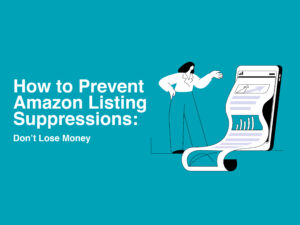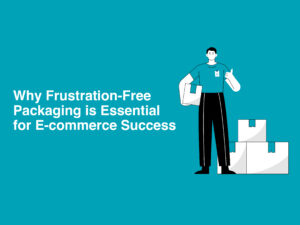In today’s digital age, providing a personalized experience to customers has become more important than ever. It’s no longer enough to offer a one-size-fits-all approach. Customers want to feel valued, understood and catered to on an individual level. That’s where personalization strategies come into play.
In this blog, we will uncover the top 8 personalization strategies that can significantly enhance customer engagement. From segmenting your audience based on their preferences and demographics to creating tailored content and offers, these strategies will help you create a stronger bond with your customers and increase their loyalty.
So, if you’re ready to take your customer engagement to the next level, keep reading to discover the top 8 personalization strategies that will help you stand out in today’s competitive market.
E-commerce Personalization Strategies
E-commerce customization is the process of tailoring consumers’ purchasing experiences by providing individualized product suggestions, offers, and assistance based on their browsing habits, purchase activities, personal data, and other characteristics. Imagine being able to provide your customers with the exact same things they’re looking for every time they visit your business. Personalization in e-commerce not only improves the functionality of your site, but also encourages your customers to purchase with you again and again. We’ve compiled a list of the top eight methods for creating tailored experiences.
1. Create Personalized Homepages
Your homepage is your digital storefront—a place where potential customers first interact with your e-commerce website. Harness the power of cookies and data-driven marketing to create personalized homepages that greet visitors with content tailored to their interests. You may customize the homepage in a variety of ways, including adding a suggested items section, displaying products and categories that customers are interested in, prompting them to finish existing purchases, and displaying a sale banner related to their interests.
Example: Amazon
Amazon utilizes cookies to remember visitors’ interests and preferences. After identifying the visitor’s interests, Amazon personalizes the homepage, directing them to relevant product categories. This reduces distractions, improves the shopping experience, and increases conversions.
2. Display Customized On-Site Search Results

On-site search is a critical but often overlooked aspect of e-commerce personalization. Ensure your search box is efficient and user-friendly. As users type their search terms, provide product images next to the search field. Personalize search results based on current behavior, preferences, and previous purchases. A seamless search experience ensures customers find what they want with minimal effort.
3. Display Customized Product Recommendations
Visitors often browse without immediate intent to purchase. Help them by displaying their recently viewed items prominently on the homepage. This minimizes the chances of losing potential sales.
Example: eBay
eBay’s “Recently Viewed” section reminds customers about products they previously viewed, encouraging them to continue their shopping journey. Additionally, eBay suggests new brands based on recent browsing activity, expanding the customer’s exploration.
Action Item: Implement a “Recently Viewed” section on your e-commerce website to re-engage customers with their interests.
4. Personalize Your Discounts and Deals
Recover lost revenue by offering personalized incentives to abandoned cart visitors. Since they’ve returned to your site, capture their attention with enticing discounts and deals. Targeted discounts can effectively close incomplete sales, addressing cart abandonment and reducing bounce rates.
Example: Spotify
Spotify offers a 10% discount to first-time visitors in exchange for their email addresses. This personalized approach led to a significant conversion rate, showcasing the effectiveness of tailored incentives.
Action Item: Implement behavior-based campaigns to engage both first-time visitors and returning customers effectively.

5. Data-Driven Marketing
Leverage data-driven marketing techniques to understand customer behavior and preferences. Use tools and analytics to track user interactions, click-through rates, and conversion data to inform your personalization efforts. Data analytics services play a crucial role in understanding customer behavior and preferences through data.
Example: Adobe Marketing Cloud
Adobe Marketing Cloud provides data analytics and segmentation tools to help businesses gather valuable insights and create personalized marketing campaigns.
6. Geo-Targeting for Localization
Customize your website based on a visitor’s location. This includes displaying prices in their currency, offering localized content, and factoring in cultural and seasonal differences. Allbirds does this effectively by adapting product pages to the user’s location.
7. Provide Personalized Customer Service
Exceptional customer service has always been crucial in building customer loyalty. AI-powered chatbots can elevate the customer experience by providing personalized responses to inquiries and questions. Rather than generic replies, intelligent chatbots can interact with customers on a personal level, making them feel valued and appreciated.
8. Get Personal in Email Marketing
Email marketing remains a potent tool for e-commerce. Incorporate personalization tactics into your email strategy to maximize its impact.
Personalize Email Subject Lines
Create subject lines that directly address recipients, increasing the likelihood of email opens. Research shows that personalized subject lines are 26% more likely to be opened.
Celebrate Birthdays and Anniversaries
Mark milestones and special occasions with your subscribers, adding a personal touch. Offer incentives to encourage repeat purchases.
Send Emails Based on User Behavior
Track user behavior on your site and send targeted emails based on their actions. Use URL tracking to follow up with relevant content and offers.
Re-Engage Inactive Leads
Identify and re-engage customers who haven’t interacted with your emails or made purchases in a while. Use personalized incentives to win them back.
Action Item: Implement these personalization tactics in your email marketing strategy to drive engagement and conversions.
Incorporating these personalization strategies into your e-commerce store can yield remarkable results. When done right, personalization can enhance the user experience, drive customer engagement, and lead to increased sales. Remember that excellent customer service is intertwined with e-commerce personalization. Reducing friction in the buying process is essential to your customer acquisition efforts.
By implementing these strategies, you can optimize your e-commerce store, ensuring that every customer interaction is meaningful, enjoyable, and profitable. If you’re ready to take your e-commerce personalization to the next level and see the impact it can have on your business, book an appointment with our experts today. Let’s make your online store a personalized shopping haven for your customers.


